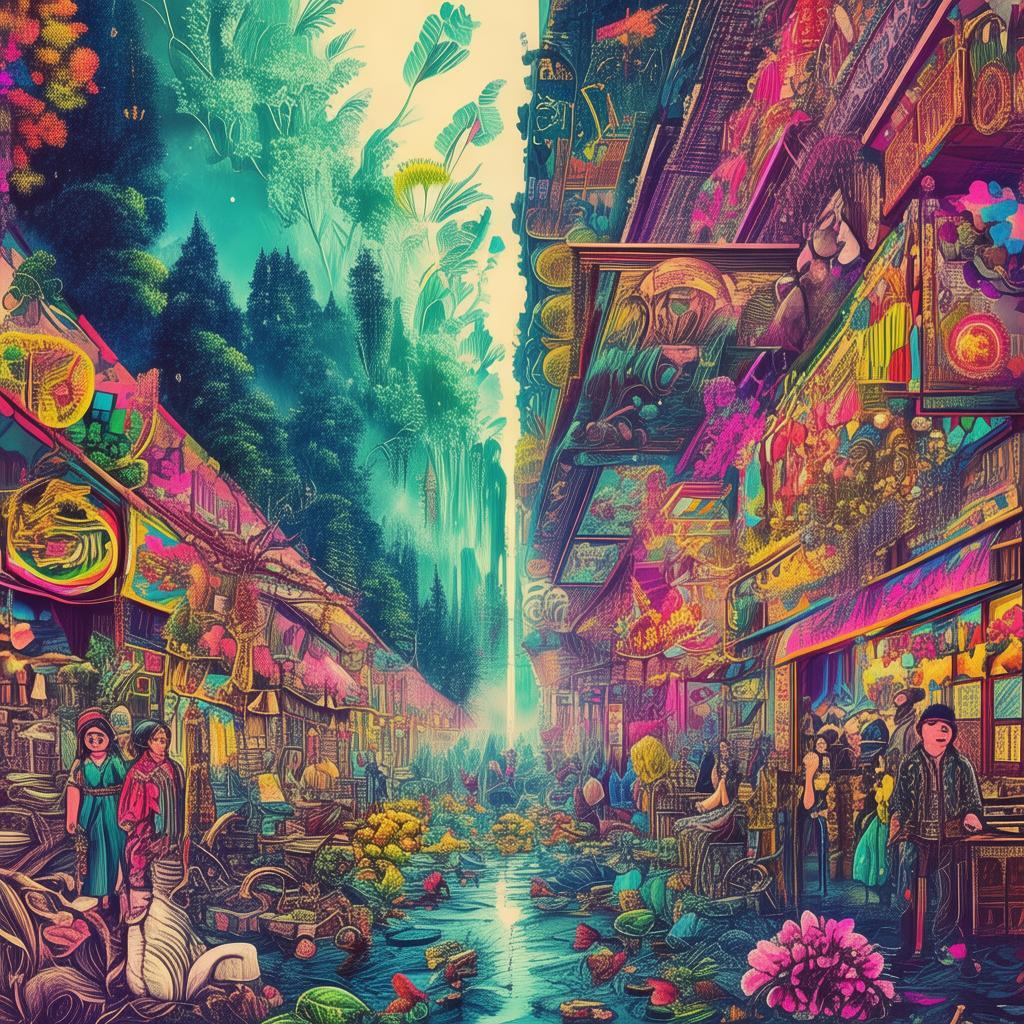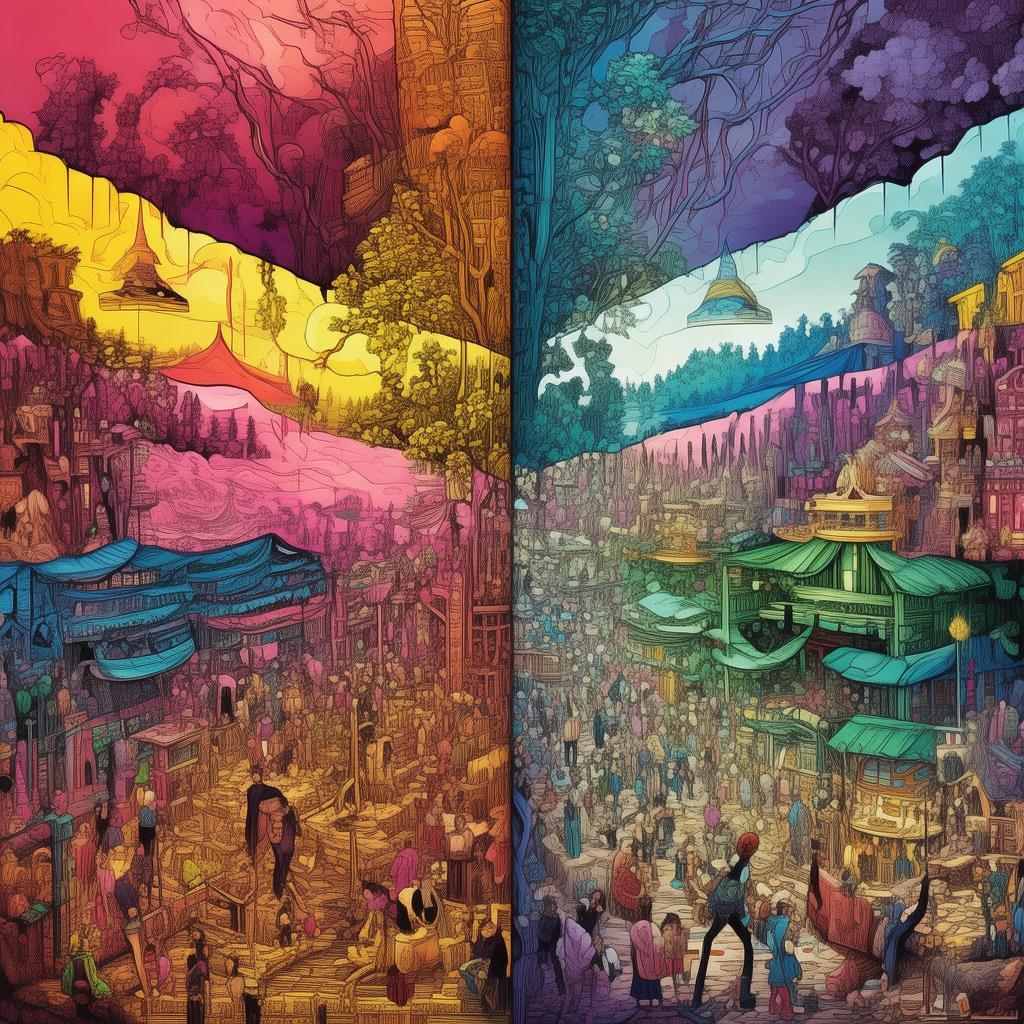The Silent Witness of the Blindfold
In the heart of a bustling city, where the cacophony of life never seemed to cease, there lived a woman named Eliza. She was known to many as the Blind Seer, a name that belied her true sight—a sight that was as keen as the eyes of a hawk, though she was blind. Eliza had a gift, a gift that was as rare as it was mysterious. She could interpret the unseen, the silent whispers of the world that no one else could hear.
Eliza's home was a quaint little shop on the edge of the city, filled with old books, artifacts, and trinkets that whispered stories of the past. It was here that she met her latest client, a woman who had come seeking guidance in the most desperate of times. The woman, named Clara, was a painter, her eyes full of sorrow and her hands trembling with the weight of her burden.
"Eliza," Clara began, her voice barely above a whisper, "I need to know if there is a way to see again. My eyes are failing me, and I fear that I may lose my art, my life."
Eliza listened, her heart heavy with the weight of Clara's plea. She knew that the answer was not in her power to give, but she also knew that Clara's story was not one that could be ignored.

As the days passed, Eliza found herself drawn deeper into Clara's life. She learned of a dark secret that Clara had kept hidden for years, a secret that involved a mysterious man and a mysterious blindfold. The blindfold, Eliza realized, was more than a symbol of Clara's blindness—it was a symbol of her own.
Eliza's own story was one of loss and adaptation. At the age of two, she had been stricken with an illness that left her blind. Her mother, a woman of great strength and determination, had taught her to read Braille and to navigate the world through sound and touch. Eliza had become an interpreter of the world's silence, a seer who could hear the unspoken.
As Eliza delved deeper into Clara's past, she uncovered a web of deceit and betrayal that reached far beyond the walls of her shop. The blindfold, it turned out, was a key to a hidden truth that could change everything. It was a truth that Clara had been forced to hide, a truth that Eliza was now determined to uncover.
The night of the revelation was tense and electric. Eliza, with her keen sense of hearing, could feel the anticipation in the air as Clara spoke of the man who had given her the blindfold, a man who had promised her freedom but had instead ensnared her in a web of lies.
"The blindfold," Clara whispered, "it was supposed to be a gift. It was supposed to help me see again. But instead, it trapped me, made me blind to the truth."
Eliza listened, her heart aching for Clara's pain. She knew that the blindfold was more than a physical object; it was a metaphor for Clara's own blindness to the truth, to the real world beyond the canvas of her paintings.
In a moment of clarity, Eliza realized that she had to help Clara see the truth, even if it meant that she would have to confront her own past and the fears that had kept her silent for so long. She decided to use her gift to interpret the unseen, to help Clara see the truth that had been hidden from her for so long.
As the night unfolded, Eliza and Clara worked together, piecing together the puzzle that had been left untold. They discovered that the man who had given Clara the blindfold was a notorious criminal, a man who had used her and others like her to further his own agenda.
The climax of their discovery came when Eliza, using her heightened sense of hearing, caught a whispered conversation between the criminal and his associates. It was a conversation that revealed the truth about the blindfold and the man who had given it to Clara.
With the truth uncovered, Clara was free. She could see again, not with her eyes, but with her heart and her soul. Eliza, too, found a new sense of freedom, a freedom that came from facing her own fears and helping others to do the same.
The ending of their story was not without its challenges. Clara had to come to terms with the pain of the past and the betrayal of the man she had trusted. Eliza had to confront the fear of losing her own sight and the silence that had once defined her life.
But in the end, both women found a way to move forward. Clara's art flourished, her paintings filled with the colors of her newfound freedom. Eliza continued to interpret the world's silence, to help others see the unseen, and to live her life with the courage that had always been within her.
The story of Eliza and Clara, the Blind Seer and the painter, became a legend in the city. It was a story of resilience, of the power of truth, and of the courage to face one's fears. It was a story that would be told for generations, a story that would inspire others to see the world in a new light, even if they could not see it with their eyes.
✨ Original Statement ✨
All articles published on this website (including but not limited to text, images, videos, and other content) are original or authorized for reposting and are protected by relevant laws. Without the explicit written permission of this website, no individual or organization may copy, modify, repost, or use the content for commercial purposes.
If you need to quote or cooperate, please contact this site for authorization. We reserve the right to pursue legal responsibility for any unauthorized use.
Hereby declared.









